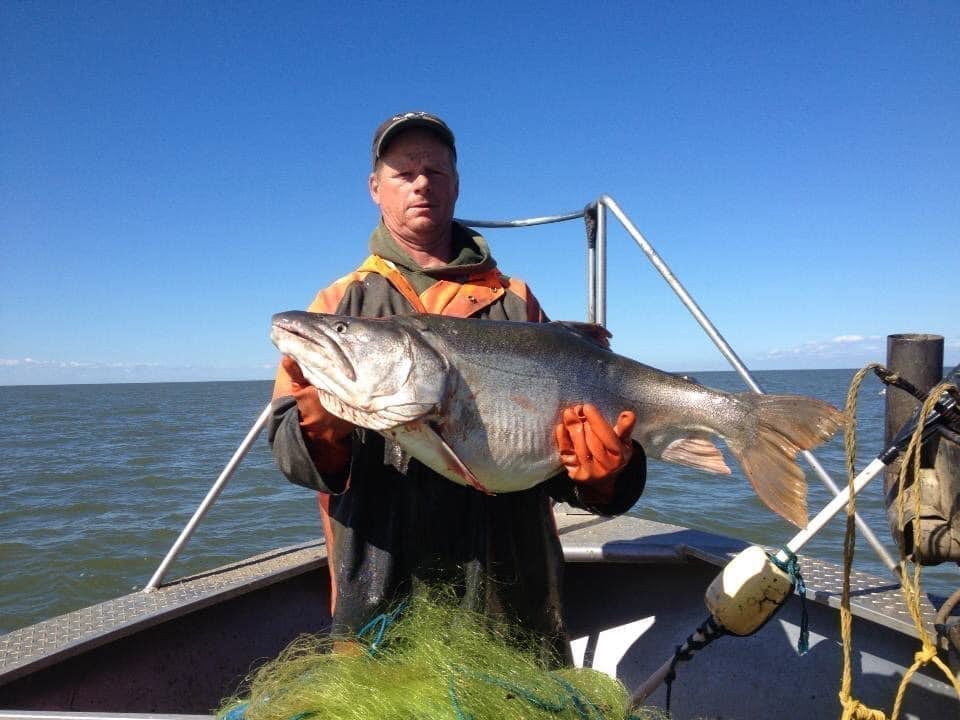
Photo courtesy of the Courtoreille family
After over a week with no sign of four fishermen missing on Great Slave Lake, it is now believed that they have been lost.
In an Oct. 4 news release, Hay River RCMP announced that, after an extensive aerial and water-based search over the previous four days, they were in a "recovery mode" for the missing fishermen.
"It's been a difficult week for friends and family of the missing four men," said Sgt. Brandon Humbke of the Hay River RCMP. "They were well-known and respected fishermen. We are working hard to try to collect any information and evidence that could bring answers to their loved ones as to what happened."
The RCMP has maintained regular contact with family members of the fishermen.
"At this time, it is believed that all viable search options have been exhausted," the RCMP reported on Oct. 3. "With information to date, the probability of survival is low."
The four men left the commercial wharf in Hay River early on Sept. 29 to check fishing nets at Sulphur Point, on the south shore of Great Slave Lake east of Hay River.
They were scheduled to be back before nighttime on Sept. 29, but were reported missing in the early morning hours of Sept. 30. On that day, the RCMP initiated a search and rescue operation.
On Oct. 1, searchers discovered the partially submerged vessel used by the fishermen in the area of Windy Bay, which is on the north side of Great Slave Lake west of the entrance to the North Arm.
Fishing debris, believed to be from the vessel, was located in the open water in the area.
The RCMP identified the missing fishermen as Daniel Courtoreille, 51, Michael Courtoreille, 50, and Jason Fulton, 40, all from the Lesser Slave Lake area in Alberta. The fourth missing fisherman is Stacy Linington, 59, from Hay River.
Even days after the fishermen went missing, some family members – many of whom travelled to Hay River to help with the search or await word on their loved ones – were clinging to a fading hope that the men might somehow be found alive.
That included five sisters of the Courtoreille brothers. The sisters are also the first cousins of Jason Fulton.
"I believe in God. We've been praying, and I'm still believing that I will find my brothers, but at the same time each hour, each minute that goes by it's not looking good," said one of the sisters, Marlene Auger, on Oct. 3. "But I'm still believing and holding onto the hope that they're somewhere out there along the shoreline just waiting to be found alive."
Another sister, Rosemarie Courtoreille, echoed that sentiment.
"For me, I believe the impossible is possible," she said, also on Oct. 3.
"I came up to bring my brothers home, either way, whatever that means," said another sister, Yvonne Henry. "And to bring closure."
In all, 30 to 40 relatives of the missing fishermen travelled to Hay River from Alberta and British Columbia.
Hay River and surrounding communities responded to their time of need by an outpouring of help – donations of food and money, assistance in accommodations, a fundraiser, and help in searching the lake and its shoreline.
"I'm just overwhelmed with all the support," said Marlene Auger. "And I just want to thank everybody for all that you're doing and for your continued support."
Rosemarie Courtoreille was "speechless" because of the community support.
"And sometimes I cry to see that, because it's the love and the unity," she said. "Because even though my brothers were here seasonal, to know that they in some way, shape or form were part of the community."
Beatrice Lepine helped organize the community support, particularly at Soaring Eagle Friendship Centre, which became the gathering place for the relatives who travelled to Hay River.
"It's been unbelievable the response from the community," said Lepine.
She noted that it's the traditional way for people to gather together if a tragedy happens.
"People gather together to support one another," she said.
While the Courtoreille brothers and Jason Fulton would travel to Hay River for seasonal fishing, Stacy Linington, who was also from the Lesser Slave Lake area, would spend most of the year in Hay River.
In his seven years fishing on Great Slave Lake, Linington even served a two-year term as president of the NWT Fishermen's Federation.
"He produced a lot of fish," said Bert Buckley Sr., the president of the Tu Cho Fishers Co-operative. "He liked to fish, and that's what he did is produce fish."
Buckley, who has been a fisherman on Great Slave Lake for about 50 years, helped the relatives of the missing fishermen understand the conditions on the lake.
"This is a miniature ocean," he said, noting it can be a very violent lake.
As part of the search efforts, vessels from the Canadian Coast Guard and the Canadian Coast Guard Auxiliary were deployed. An aerial search over Great Slave Lake was conducted by 440 Squadron of the Royal Canadian Air Force in Yellowknife, the Joint Rescue Co-ordination Centre in Trenton, Ont., and the Civilian Air Search and Rescue Association.
A remotely-operated underwater vehicle from the Department of Fisheries and Oceans was used to examine the partially submerged fishing vessel.